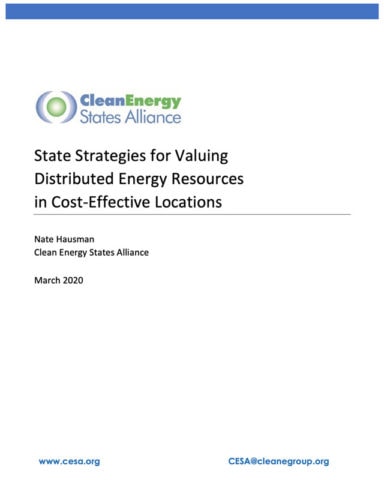Locational Value of Distributed Energy Resources
Solar PV and other distributed energy resources (DERs) are playing an increasingly important role in electricity systems across the United States.
When DERs are deployed optimally, they can offer benefits to the customer, to the grid, and to utility ratepayers. For example, optimally sited DERs can reduce grid congestion and help defer, reduce, or avoid distribution system upgrade costs. Likewise, targeted solar+storage deployments can provide resiliency benefits in an event of an electrical outage.
Under CESA’s Multistate Initiative to Develop Solar in Locations that Provide Benefits to the Grid, we worked with five states and the District of Columbia to identify locations where solar and other DERs could increase the reliability and resilience of the electric grid. While our project broadly aimed to advance state decision-making for identifying high-value locations for DER development, each participating state had its own specific approach and aims under the project. CESA published a report titled State Strategies for Valuing Distributed Energy Resources in Cost-Effective Locations, which incorporates insights and lessons learned from participating states in the course of conducting our collaborative initiative.
The agencies CESA partnered with on this project are:
- Connecticut Green Bank
- Office of the People’s Counsel for the District of Columbia
- New Hampshire Public Utilities Commission – Sustainable Energy Division
- Rhode Island Office of Energy Resources
- Washington Department of Commerce – State Energy Office
- Wisconsin Office of Energy Innovation
CESA’s Multistate Initiative to Develop Solar in Locations that Provide Benefits to the Grid was completed in fall of 2019.
This project was part of the Solar Energy Innovation Network, a collaborative research effort to explore new ways solar energy can improve the affordability, reliability, and resiliency of the nation’s electric grid. NREL operates the Solar Energy Innovation Network with funding from the U.S. Department of Energy Solar Energy Technologies Office.


